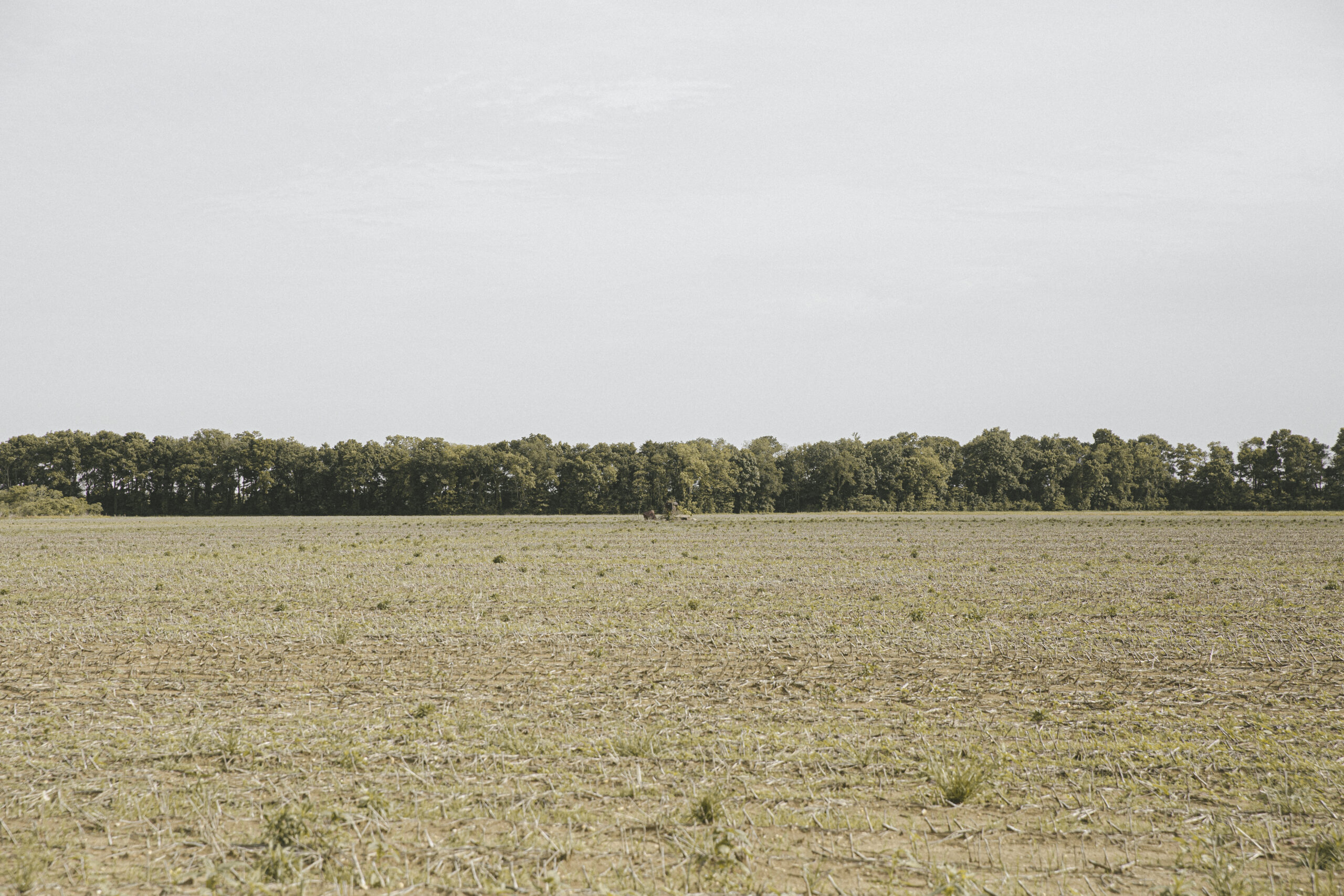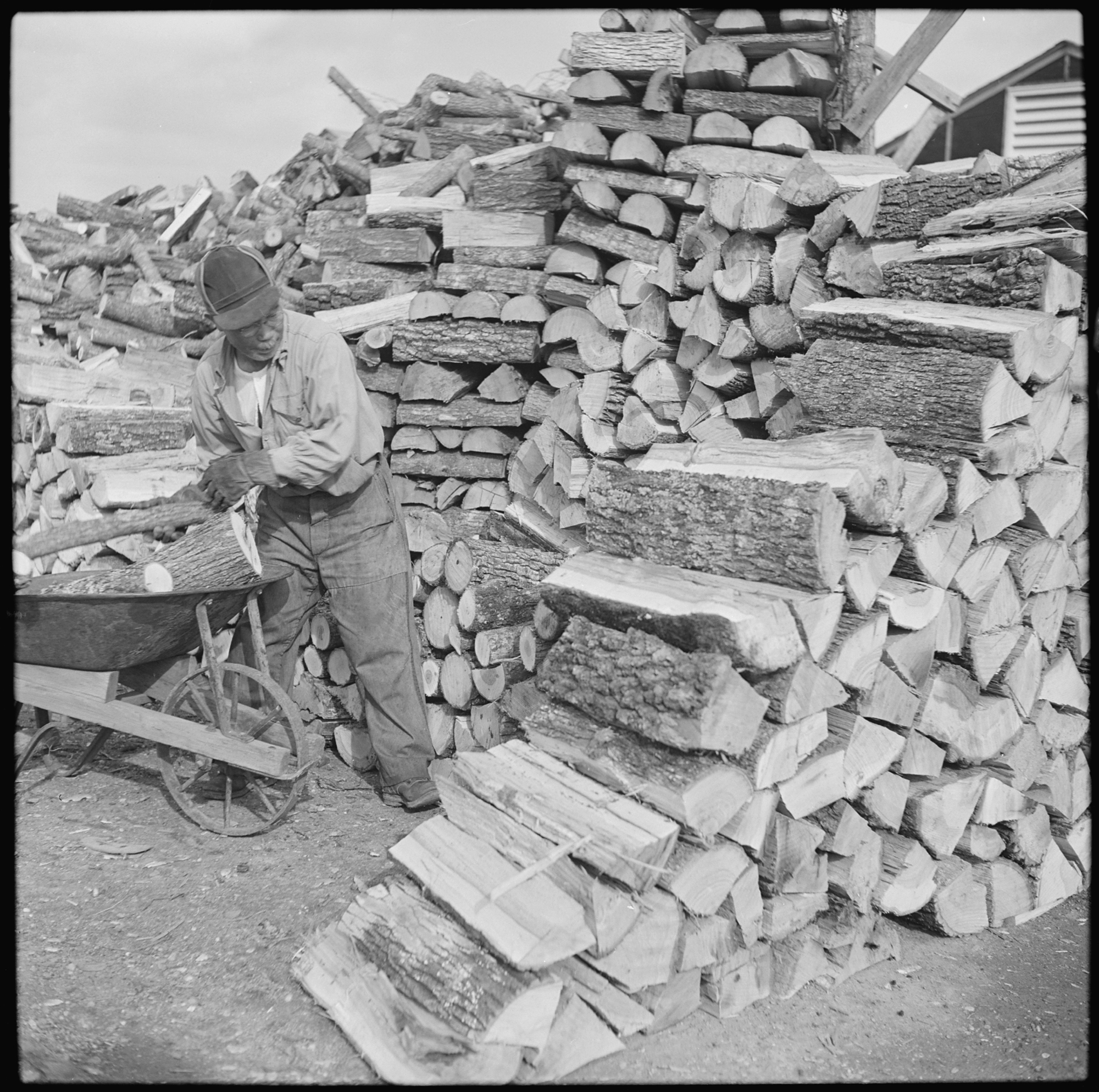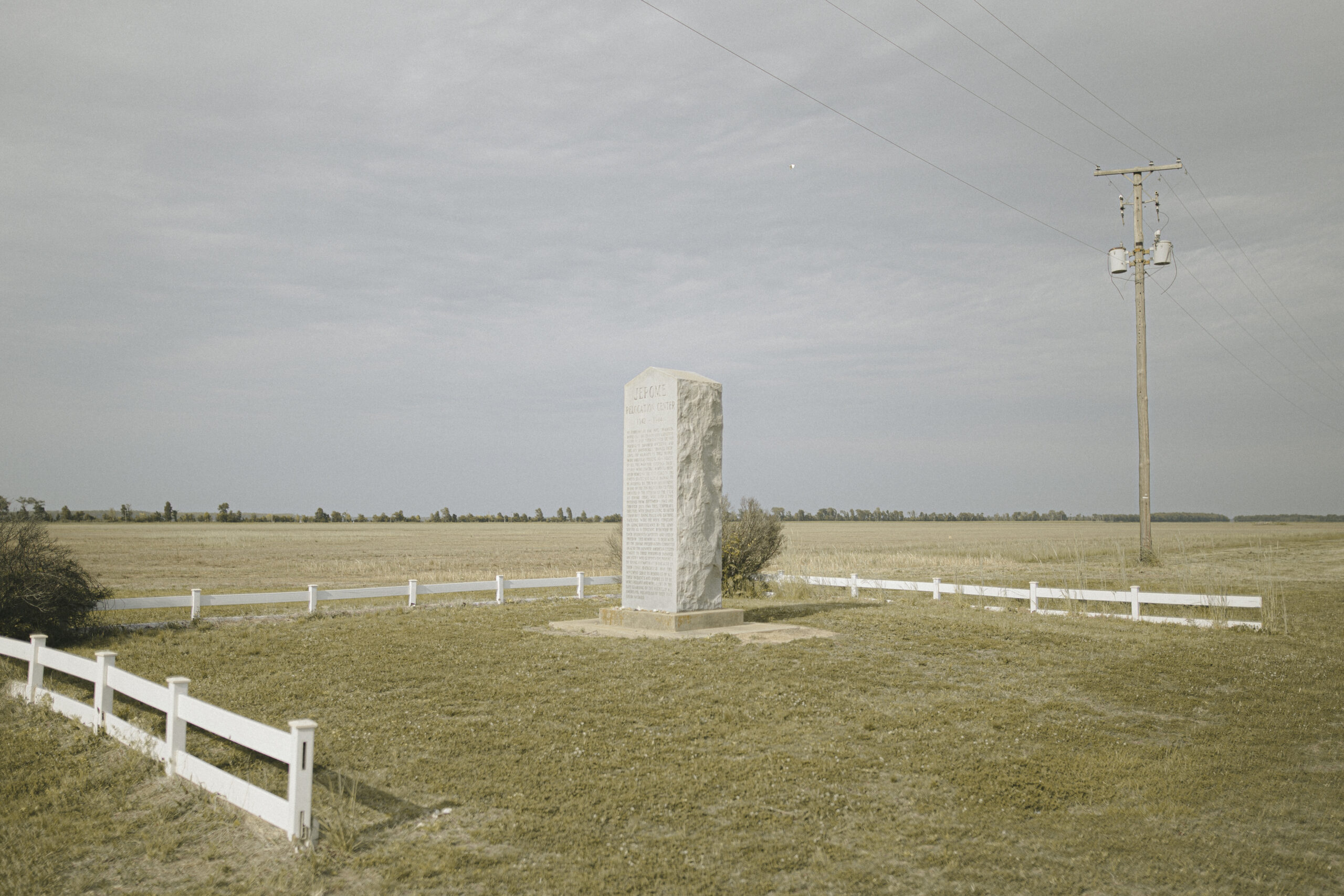
Located in southeastern Arkansas, Jerome was a War Relocation Authority concentration camp that was only open for a brief 21 months, shorter than any of the other camps. It had the lowest rate of “yes” answers to Question 28 on the loyalty questionnaire, the lowest rate of volunteers for the armed forces and the highest rate of incarcerees who were sent to the Tule Lake Segregation Center.
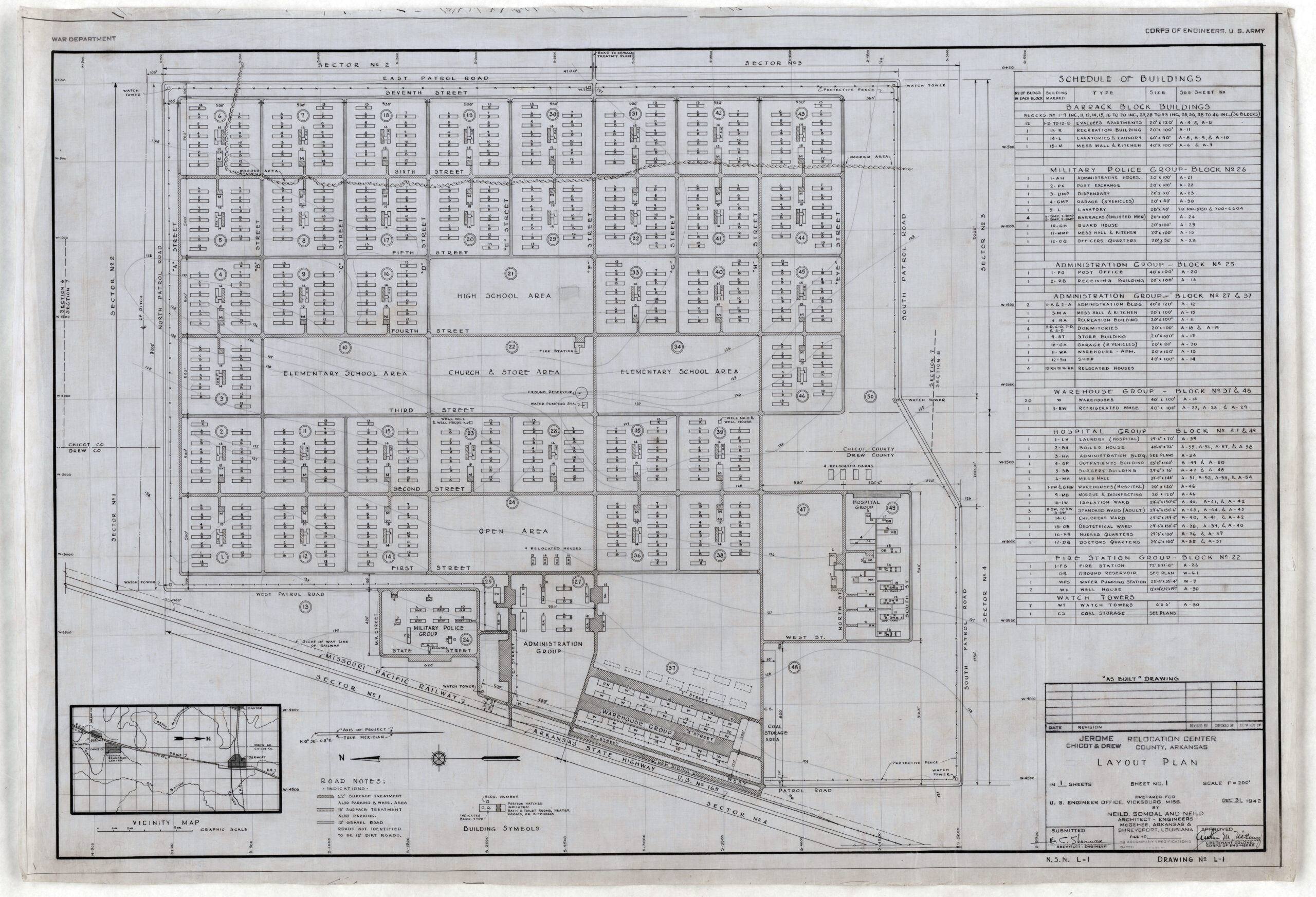
The War Relocation Authority‘s master plot plan for Jerome. Courtesy of the National Archives and Records Administration.
The concentration camp was situated on 10,000 acres of wooded marshland in the Mississippi River Delta. Densely forested and prone to frequent flooding, the area had been largely abandoned until it was acquired by the War Relocation Authority in 1942.
Construction of Jerome began later that summer but dragged on for months, even after the first incarcerees began to arrive in October. As a result, many incarcerees were forced to live in unfinished barracks with missing windows. Some incarcerees trudged over half a mile through ankle-deep mud to eat at the mess hall. Improperly sealed water pipes led to contaminated water, and diseases like dysentery spread throughout the incarceree population.
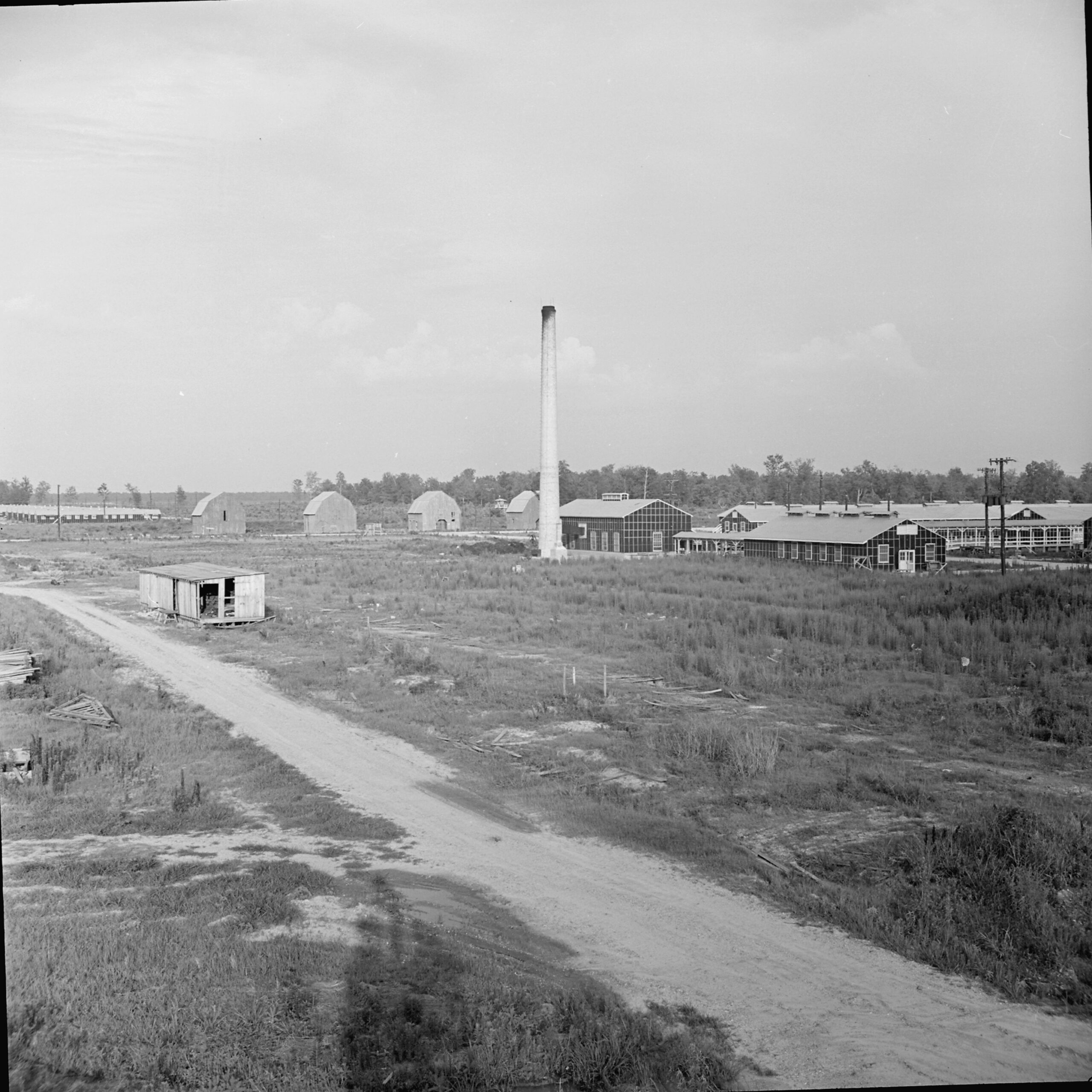
A smoke stack at Jerome concentration camp photographed shortly before the camp’s closing. June 22, 1944. Courtesy of National Archives and Records Administration.
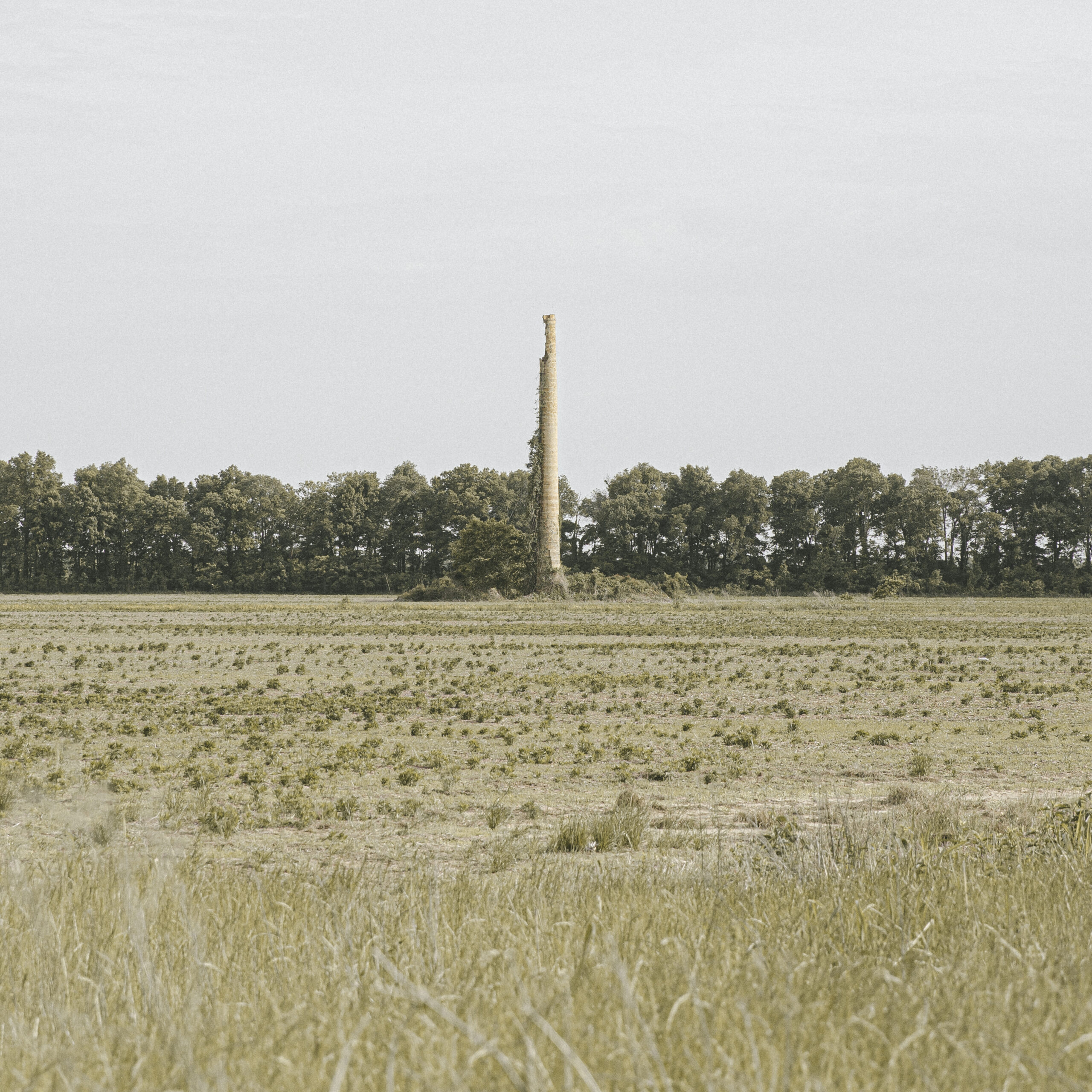
Most of the land that the Jerome concentration camp was once on is now owned by the Ellington family, who purchased the land in the 1950s for farming. Few structures remain except for a smoke stack that was once attached to the hospital building. May 4, 2023.
The 20′ x 120′ barracks were divided into six family units, and each were designated a bed per person, an electrical outlet and a wood burning stove for heat. However, construction delays meant that some families did not get a stove installed until as late as mid-December.
To combat the bitter cold, incarcerees were instructed to chop wood from the surrounding forests to heat their own units—physically demanding and potentially dangerous work for those who have no lumberjacking experience. Tensions escalated between the incarcerees and camp administrators. In April of 1943, a dispute between woodcutters and a white supervisor led to the dismissal of two incarceree workers. Consequently, 30 out of 34 mechanics and shop workers went on strike. Later that fall, a trailer carrying woodcutters overturned, resulting in one death and 20 hospitalizations, sparking discussions about a potential general strike. Although the strike did not materialize, it led to the resignation of the camp director.
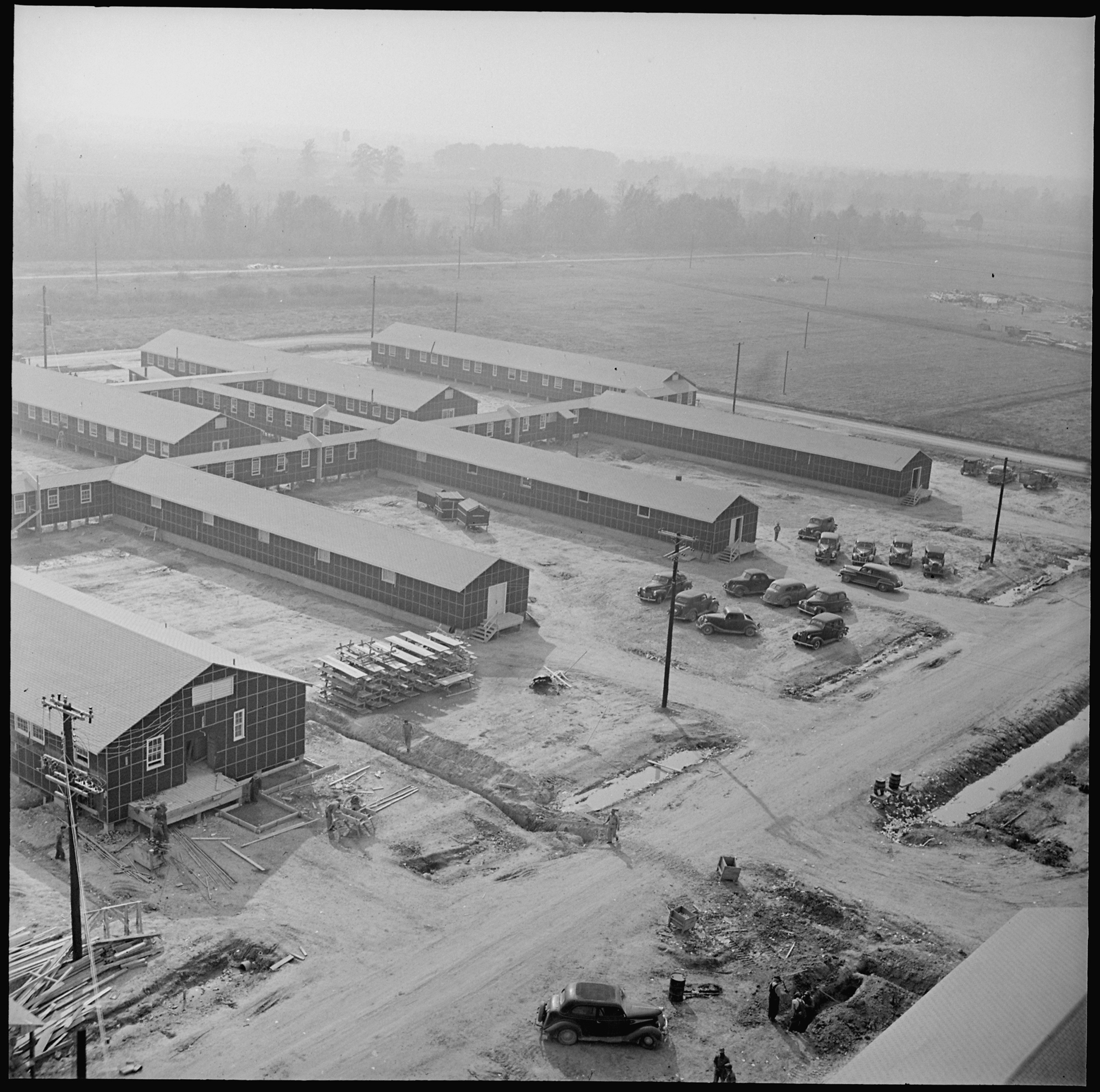
An aerial view of the Jerome concentration camp. November 17, 1942. Courtesy of Densho Encyclopedia.
Jerome received over 800 incarcerees directly from Hawai’i, the largest contingent sent to any War Relocation Authority camp. Because Nikkei comprised of about 37 percent of Hawai’i’s population, Hawai’i was excluded from Executive Order 9066 and only subject to “selective” incarceration. Still, the U.S. forces arrested about 2,000 Hawai’ian residents, most of which were forcibly brought to the mainland.
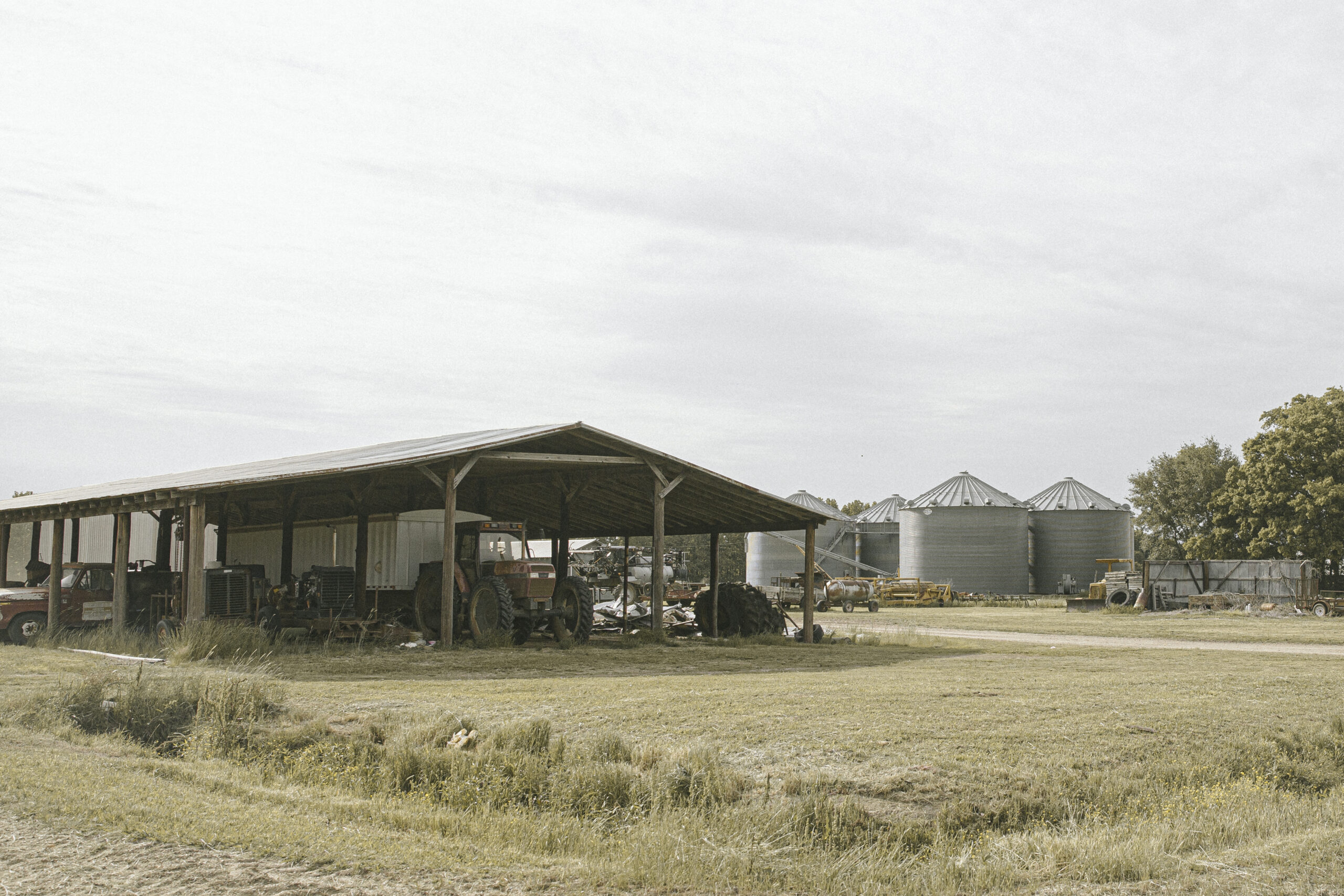
Although the land is now primarily used for farming, the Ellington family continues to invite former incarcerees to help locate where their barrack was. The late John Ellington grew up nearby the Jerome concentration camp and often played with the incarcerated children.
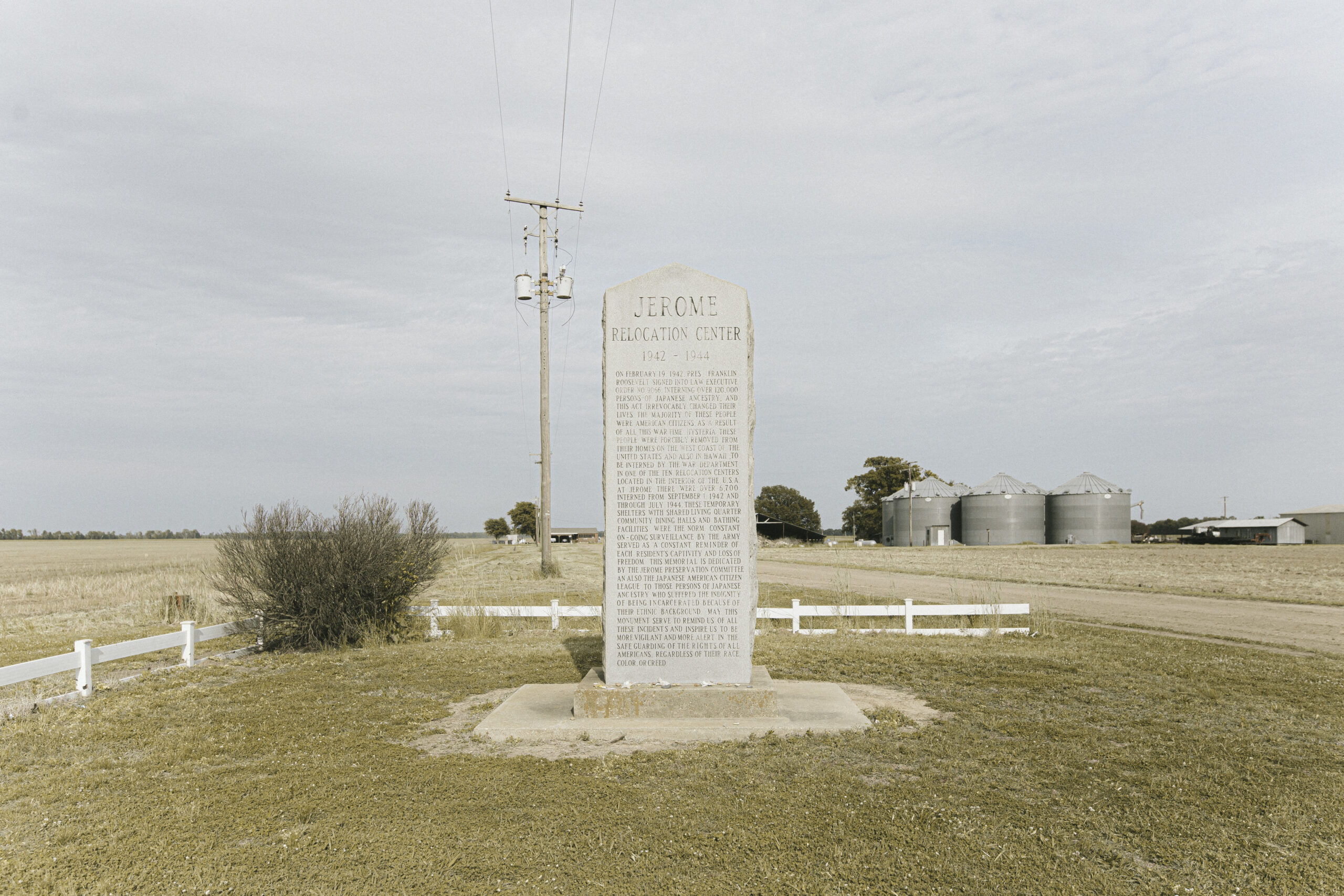
In an effort to preserve the history of the former concentration camp, John Ellington and former incarceree George Sakaguchi raised funds to build a stone monument to memorialize the site, which was completed in 1992.
Why is Jerome significant?
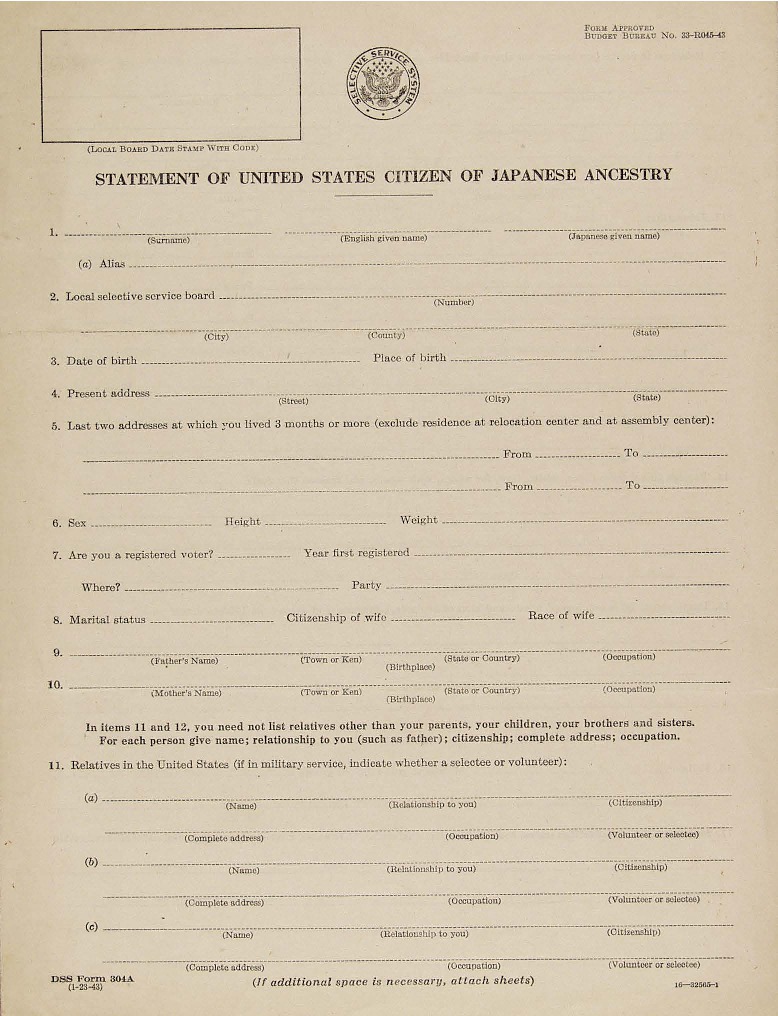
Jerome had the lowest rate of “yes” answers to Question 28 on the loyalty questionnaire, the highest rate of segregants to Tule Lake Segregation Center and the lowest rate of volunteers for the armed forces.
Due to poor communication, registration for military service at Jerome was chaotic and lasted over a month. Although registration officially began on February 9, 1943, only about half of the total population had completed registration by February 20. Around 600 Kibei incarcerees refused to register. Voices of dissent surfaced in other parts of the camp. On March 2, the camp administration warned that non-compliance could lead to potential jail time. Ultimately, about one-fourth of incarcerees responded “no” to Question 28—a stark contrast to the 9% average for all War Relocation Authority camps. Remarkably, the rate climbed to about 30% among male U.S. citizens.
Camp administrators grew concerned about potential dissenters and urged the War Relocation Authority to implement a segregation program to separate “troublemakers” from the rest of the incarceree population. Beginning in the fall of 1943, individuals considered “disloyal” were transferred to Tule Lake Segregation Center, totaling 2,147 individuals. Only 37 men volunteered for military service from Jerome.
